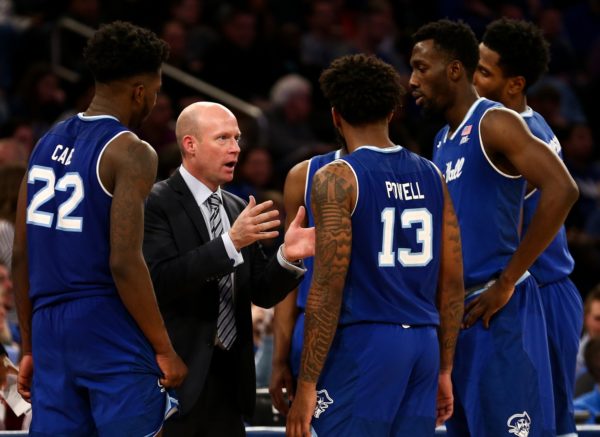Seton Hall’s Rebuild Has Yielded Great Optimism
Posted by Justin Kundrat on December 21st, 2018All signs pointed to a substantial down year at Seton Hall following the graduation of Kevin Willard‘s heralded recruiting class of 2014. Given that the three-headed monster of Khadeen Carrington, Angel Delgado and Desi Rodriguez carried the Pirates to three consecutive NCAA Tournaments and accounted for 60 percent of the team’s scoring last season, question marks outweighed the certainties. Eleven games into this season, however, Seton Hall has put together a polished 8-3 record highlighted by a neutral floor win over Kentucky and a missed shot away from defeating Louisville.

Numerous factors have led to the team’s surprise performance this season, the biggest of which has been the infallible play of returnee Myles Powell. The junior guard was a key contributor on last season’s squad but was never asked to shoulder the scoring load, leading to concerns about his ability to do so consistently. And while some of the Pirates’ offensive sets are still a frustrating sight, he is averaging 22.7 PPG to date while improving his scoring efficiency at all three levels. Willard’s star is getting to the rim and drawing fouls at a higher rate than last season while maintaining the sharp-shooting (38.1% 3FG) that made him such a threat in the first place.
The other facets of uncertainty with these Pirates were the team’s ability to replace Delgado in the post and Carrington at the point. Both positions got off to relatively rocky starts early this season as fresh faces adapted and Willard experimented with his rotations, but things are finally starting to take shape. Transfer Quincy McKnight has served as a steady if not spectacular ball-handler and facilitator (Seton Hall ranks 14th in turnover rate nationally) while former Syracuse big man Taurean Thompson has shown flashes of an uncanny point forward skill set. The sophomore’s play remains mightily inconsistent — particularly on the defensive end — but his potential is plentiful. McKnight, on the other hand, has been the critical glue guy that the youthful backcourt needed while freshman Anthony Nelson gets up to speed with things. The Pirates’ offense is still a far cry from last season’s remarkable 1.17 PPP (17th nationally), but several of the holes have been at least partially plugged.
Perhaps the most striking part of Seton Hall’s transformation from last year’s veteran team, though, has been with its defense. While the defensive end of the floor has never been bad during Willard’s tenure at the school, it always felt like the Pirates were more focused on scoring than generating stops at critical junctures. As a result, the team suffered a number of frustrating losses when the offense wasn’t clicking, often leaving fans with a lingering sense of underachievement. The metrics have yet to reflect this apparent defensive mindset, but Seton Hall has numerous interchangeable guards and forwards on the roster now that are much better at switching and containing dribble penetration. It is for this reason that, in spite of a drastic personnel overhaul, the future of this program certainly appears to be bright.










































